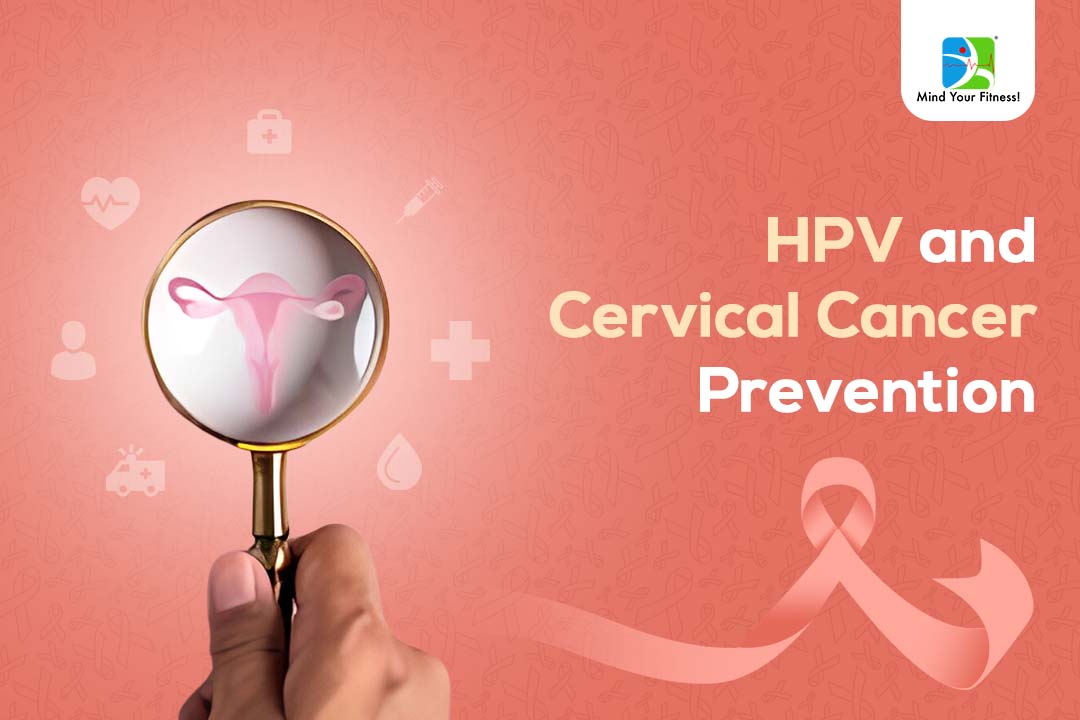About HPV:
HPV, or Human Papillomavirus, is a group of viruses that can infect the genital area, mouth, and throat of both males and females.
It is the most prevalent sexually transmitted infection (STI) worldwide. HPV is so common that nearly everyone who is sexually active will be affected by it at some point in their lives. While most infections resolve on their own, some can persist and lead to serious health issues.
There are about 40 known types of HPV, and they are categorised into low-risk and high-risk types based on their association with cancer.
While high-risk strains can lead to various cancers such as cervical cancer in women and other cancers such as cancers of the anus, penis, vagina, vulva and oropharynx; low-risk strains may cause warts on the genital or anal areas in men and women. Genital warts are not life-threatening, but the treatment can lead to discomfort and emotional stress.
Cervical Cancer Risk Factors:
HPV infection is a necessary cause of cervical cancer, but it is not a sufficient cause alone.
Other cofactors are necessary for progression from cervical HPV infection to cancer.
Long-term use of hormonal contraceptives, high parity, early initiation of sexual activity, multiple sex partners, tobacco smoking and co-infection with HIV have been identified as established cofactors.
Co-infection with Chlamydia trachomatis and herpes simplex virus type-2, immunosuppression, low socioeconomic status, poor hygiene and diet low in antioxidants are other probable cofactors.
Cervical Cancer Screening:
The Pap test, or Pap smear, is a screening tool used to detect abnormalities in the cells of the cervix in women. Regular Pap tests can help detect and treat these abnormalities before they progress to cancer.
In addition to the Pap test, there are specific HPV tests that can identify the presence of cervical infection by high-risk types of HPV strains.
Except for genital warts, the infection is asymptomatic.
An HPV test is usually done at the same time as a Pap test.
However, getting an HPV or PAP test is not required to take the HPV vaccine.
Vaccination and Cervical Cancer Prevention:
The HPV vaccine is recommended for both males and females. Ideally, vaccination should occur before individuals become sexually active to ensure maximum effectiveness. The Centers for Disease Control and Prevention (CDC) is the national public health agency of the United States. CDC recommends 11–12-year-old boys and girls get two doses of the HPV vaccine. It is also recommended for males and females between the ages of 13 and 26 years who have not already been vaccinated to complete the vaccine series.
The vaccines do not cover all HPV strains, they offer substantial protection against the strains most likely to cause cancer. Also, HPV vaccines do not prevent other sexually transmitted infections (STIs), so it is essential to take adequate safety precautions to lower the risks for other STIs.
Condoms may not provide complete protection against skin-to-skin transmission of HPV, but they significantly reduce the risk. Consistent and correct use of condoms during sexual activity, including vaginal, anal, and oral sex, can contribute to the prevention of various STIs, including HPV. By adopting proactive measures such as practising safe sex, limiting the number of sexual partners, maintaining personal hygiene, and undergoing regular screening, individuals can take control of their sexual health and contribute to the prevention of STIs, including HPV.
Indian scenario:
Cervical cancer is ranked as the most frequent cancer in women in India. India has a population of approximately 365.71 million women above 15 years of age, who are at risk of developing cervical cancer. (Reference)
India’s Universal Immunization Programme (UIP) has been instrumental in introducing the HPV vaccine to safeguard the population against HPV-related cancers. It is available through various channels, including government health facilities, private clinics, and vaccination drives organised by healthcare organisations. The Vaccination schedule typically involves two doses administered six months apart.
Two vaccines licensed globally are available in India; a quadrivalent vaccine (Gardasil™ marketed by Merck) and a bivalent vaccine (Cervarix™ marketed by Glaxo Smith Kline).
The recommended age for initiation of vaccination is 9–12 years. Catch-up vaccination is recommended up to age 26 with an upper limit of 45 years. After 26, a woman can decide with her doctor if it’s a good idea to take the vaccine.
A total of three doses at 0, 2 and 6 months are recommended with Gardasil™ or 0, 1 and 6 months with Cervarix™ (minimum interval of 4 weeks between the first and the second dose, 12 weeks between the second and third dose and 24 weeks between the first and third dose).
If the HPV vaccine schedule is interrupted, the vaccine series need not to be restarted. If the series is interrupted after the first dose, the second dose should be administered as soon as possible, with an interval of at least 12 weeks between the second and third doses. If only the third dose is delayed, it should be administered as soon as possible.
The Indian Academy of Pediatrics Committee on Immunization recommends offering HPV vaccine to all females who can afford the vaccine.
Currently, HPV vaccine is not licensed for use among males in India.
Concerns:
The primary obstacle to HPV vaccination is financial. Because of the high cost, accessibility of these vaccines is a major concern for a mass vaccination program in India.
Indian Finance Minister Nirmala Sitharaman, in her interim budget speech for 2024-25, indicated that the government would actively “promote” vaccination to combat this deadly disease.
Important things to remember :
Vaccination is necessary for cervical cancer prevention at large. The vaccine does not protect against all HPV types— so it will not prevent all cases of cervical cancer.
Vaccinated women will still need regular cervical cancer screening.
Also, women who get the vaccine after becoming sexually active may not get the full benefit of the vaccine if they had already been exposed to HPV.
For women 45-65 years of age, the best way to prevent cervical cancer is to get routine cervical cancer screening (Pap + HPV test), every 5 years.
Speak to your gynaecologist or physician for more information.





